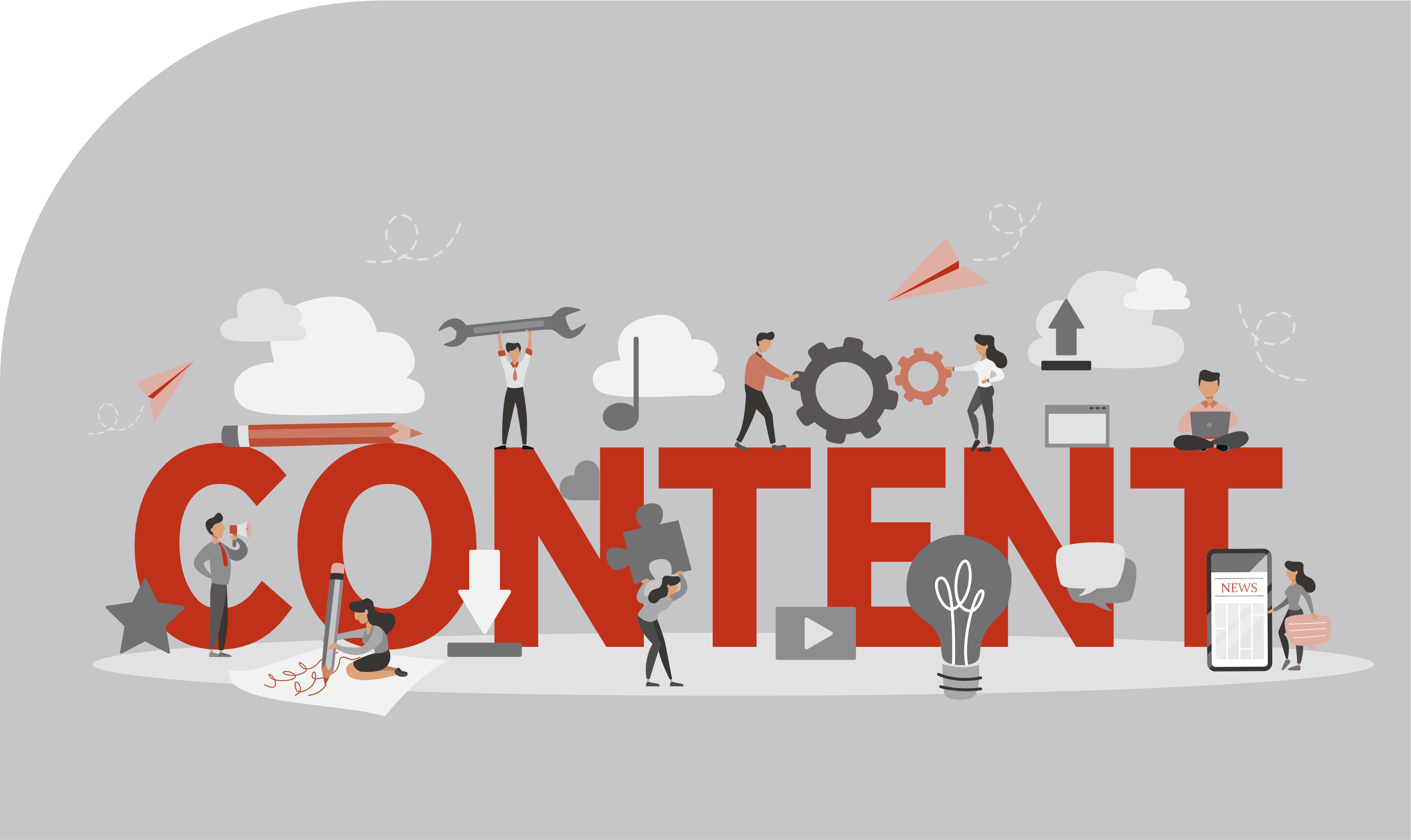Develop a content strategy for your organization
For clear messages and happy customers
Your websites, customer portals and documents represent your company to the outside world. Clear, consistent content helps customers understand your company. With a well thought-out strategy for developing and maintaining your content you will send a clear and consistent message. This will make your brand stronger and more trustworthy.
A content strategy considers the needs of target audiences and ensures that all information is relevant, high-quality, understandable, and engaging. The strategy applies to all areas of an organization that create content – because customers don't care where the content comes from. A company needs to speak the same language across all channels.
A content strategy includes standards for content design as well as definitions for content processes, customer communication goals, and metrics to measure the success of your efforts and make adjustments as needed.

Create sustainable content processes
With us, you can build a content supply chain that is optimized for reuse, consistency, and efficiency. Content is created in different areas of the company, using tools like customer relationship management (CRM), product information management (PIM), and component content management systems (CCMS) for technical writing. Standardized content structures and metadata allow contents from different sources to be reused across systems and be delivered together.
For each type of information, there should be a single source of truth. This information is only changed or created in this source; all other systems along the supply chain automatically receive that information. We help you set up a sustainable content supply chain. This is how we work.
Your contacts
Content strategy for organizations
We help you create your content strategy. This is how we work
- Consider your business goals. Together, we look at the goals and digital strategy that you want to support with your content strategy.
- Study target groups. We analyze the target audiences of your organization’s content as well as their needs, requirements, and behavior to understand what content your customers want and need.
- Analyze current content as well as content processes and systems. On request, we analyze your current content processes and identify existing content types, source systems, and processing systems for those content types. This way, we can find ways to improve information flows and workflows. We evaluate the relevance, quality, consistency, and performance of your organization's content types.
- Define the goals and components of your future content strategy. We work with you to develop the key elements of your content strategy. This includes defining target audiences, strategic goals for addressing those audiences with corporate content, source systems for specific content types, a content reuse strategy, and concepts for different delivery channels such as chatbots, websites, or customer portals. Developing an organization-wide information architecture is also part of the content strategy.
- Define your content strategy goals and key performance indicators (KPIs). Together, we evaluate or define measurable goals and metrics to measure the success of your content strategy.
- Develop an information architecture and content models. We standardize the structure of content types, identify reuse potential, and develop metadata models.
- Implement the content strategy. The measures for implementing a developed content strategy depend largely on the results of the analysis and the existing systems in which content is written and delivered. From introducing component content management systems (CCMS) or self-service portals, to developing knowledge graph databases for modeling product knowledge, to deploying chatbots in customer service, we can help you with a wide range of implementation tasks.
Learn more about content strategy for organizations in our FAQs.
FAQs – Frequently asked questions about content strategy for organizations
What is a content strategy?
A content strategy defines company-wide strategic goals, processes, and principles for managing and delivering content to a company's target audiences. This content originates from various business areas, including product information, marketing, technical documentation, and support.
The goal is to ensure consistent content quality across the organization, to reuse content across systems, and to deliver content across channels in a user-friendly and personalized way. A company's content strategy should be integrated with its overall digitization strategy.
What are the benefits of a content strategy?
- Clear communication. A content strategy helps you develop clear and consistent messaging. This leads to consistent communication – both internally and externally.
- Same message across channels. By adapting content to different channels (service portals, apps, or chatbots), a content strategy enables a consistent presence and message across platforms.
- Brand positioning and credibility. A coherent content strategy strengthens your brand positioning and builds trust with your target audiences. Consistent, high-quality content improves your organization's reputation and credibility.
- Audience alignment. By analyzing and addressing the needs of your target audiences, you deliver relevant and engaging information.
- Satisfied users. Well-structured and easy-to-understand content improves the usability of products or services. This leads to more satisfied customers and less need for support.
- Efficient content creation. Clear guidelines and standards for content simplify the authoring process, save time, and guarantee consistent quality. Interfaces between systems make sure that content is reused rather than duplicated or rewritten.
- Measurable success. Clear goals and KPIs help you measure the success of your efforts and make adjustments as needed.
- Knowledge management. A content strategy supports effective knowledge management: Relevant information is documented, maintained, and easily accessible.
What types of content are required for a content strategy?
When defining a content strategy, it is important to include content that addresses both the needs of different audiences and the goals of the organization. This includes the following types of content:
- Technical documentation
- Product information and specifications
- Website content
- Blog posts, white papers, and case studies
- Company presentations
- Community content
- Infographics, charts and images
- Videos and podcasts
- Social media posts
- Customer emails and newsletters








